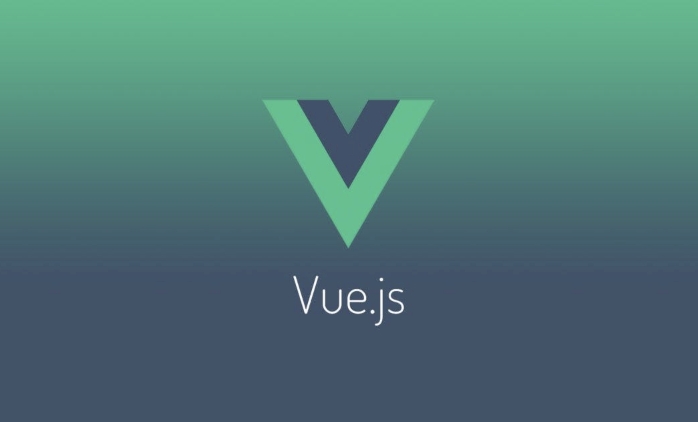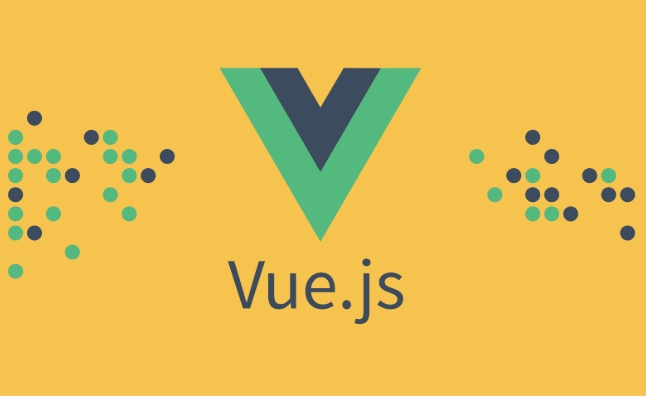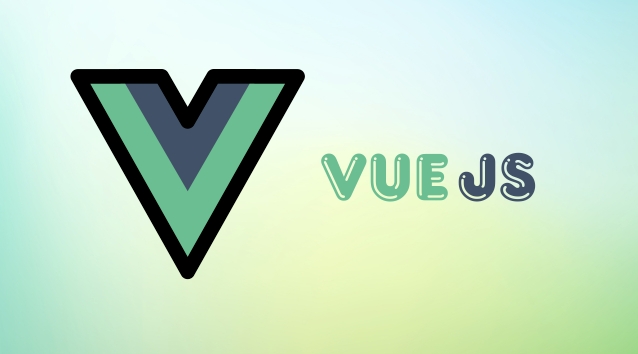v-model is used in Vue to implement bidirectional data binding for form input. 1. The text box binds string values through v-model; 2. The usage of multi-line text boxes is the same as that of single-line text; 3. The single check box binds boolean values; 4. Multiple check boxes bind the same array to collect selected values; 5. The radio button group binds the same data attribute to record selected items; 6. The drop-down box supports both single-choice and multiple-choice, binding strings or arrays respectively; 7. Provides modifiers such as .trim, .number, and .lazy to handle common input scenarios. The essence is: syntax sugar of value and @input, and can expand behavior in custom components to ultimately realize automatic synchronization of data and views.

Binding form inputs in Vue is straightforward using the v-model directive. It creates a two-way data binding between the input element and a data property in your Vue instance. Here's how to use it with different form elements.

1. Text Inputs
For basic text fields, v-model syncs the input value with a data property.
<template>
<input v-model="message" placeholder="Enter something">
<p>Message: {{ message }}</p>
</template>
<script>
export default {
data() {
return {
message: ''
}
}
}
</script>2. Textarea
Works the same way as text inputs — just bind v-model directly.

<template>
<textarea v-model="description"></textarea>
<p>Description: {{ description }}</p>
</template>3. Checkbox (Single)
A single checkbox binds to a boolean value.
<template>
<input type="checkbox" v-model="isChecked">
<label>Agree to terms</label>
<p>Checked: {{ isChecked }}</p>
</template>4. Multiple Checkboxes
Bind to an array to collect multiple selected values.

<template>
<div>
<input type="checkbox" v-model="fruits" value="apple"> Apple
<input type="checkbox" v-model="fruits" value="banana"> Banana
<input type="checkbox" v-model="fruits" value="orange"> Orange
</div>
<p>Selected fruits: {{ fruits }}</p>
</template>
<script>
export default {
data() {
return {
fruits: []
}
}
}
</script>5. Radio Buttons
Bind multiple radio buttons to a single data property — the selected value gets assigned.
<template>
<div>
<input type="radio" v-model="picked" value="apple"> Apple
<input type="radio" v-model="picked" value="banana"> Banana
</div>
<p>Picked: {{ picked }}</p>
</template>6. Select Dropdown
Works with both single and multiple selections.
Single select:
<template>
<select v-model="selected">
<option disabled value="">Choose one</option>
<option>Apple</option>
<option>Banana</option>
</select>
<p>Selected: {{ selected }}</p>
</template> Multiple (with multiple attribute):
<select v-model="selectedOptions" multiple> <option>Apple</option> <option>Banana</option> <option>Orange</option> </select>
7. Modifiers for v-model
Vue provides modifiers to handle common input patterns:
-
.trim— strips whitespace -
.number— converts input to number -
.lazy— syncs onchangeinstead ofinput
<input v-model.number="age" type="text"> <input v-model.trim="username"> <input v-model.lazy="searchQuery">
Notes
-
v-modelis syntactic sugar for:value@input(or:modelValue@update:modelValuein custom components). - In custom components, you can customize
v-modelbehavior usingmodeloption ordefineModel()in Vue 3's script setup (with Vue 3.4 ).
Basically, v-model is the go-to for form binding in Vue — just link it to a reactive data property and Vue handles the rest.
The above is the detailed content of How to bind form inputs in Vue?. For more information, please follow other related articles on the PHP Chinese website!

Hot AI Tools

Undress AI Tool
Undress images for free

Undresser.AI Undress
AI-powered app for creating realistic nude photos

AI Clothes Remover
Online AI tool for removing clothes from photos.

Clothoff.io
AI clothes remover

Video Face Swap
Swap faces in any video effortlessly with our completely free AI face swap tool!

Hot Article

Hot Tools

Notepad++7.3.1
Easy-to-use and free code editor

SublimeText3 Chinese version
Chinese version, very easy to use

Zend Studio 13.0.1
Powerful PHP integrated development environment

Dreamweaver CS6
Visual web development tools

SublimeText3 Mac version
God-level code editing software (SublimeText3)
 How to develop a complete Python Web application?
May 23, 2025 pm 10:39 PM
How to develop a complete Python Web application?
May 23, 2025 pm 10:39 PM
To develop a complete Python Web application, follow these steps: 1. Choose the appropriate framework, such as Django or Flask. 2. Integrate databases and use ORMs such as SQLAlchemy. 3. Design the front-end and use Vue or React. 4. Perform the test, use pytest or unittest. 5. Deploy applications, use Docker and platforms such as Heroku or AWS. Through these steps, powerful and efficient web applications can be built.
 Laravel Vue.js single page application (SPA) tutorial
May 15, 2025 pm 09:54 PM
Laravel Vue.js single page application (SPA) tutorial
May 15, 2025 pm 09:54 PM
Single-page applications (SPAs) can be built using Laravel and Vue.js. 1) Define API routing and controller in Laravel to process data logic. 2) Create a componentized front-end in Vue.js to realize user interface and data interaction. 3) Configure CORS and use axios for data interaction. 4) Use VueRouter to implement routing management and improve user experience.
 How to separate the front and back end of wordpress
Apr 20, 2025 am 08:39 AM
How to separate the front and back end of wordpress
Apr 20, 2025 am 08:39 AM
It is not recommended to directly modify the native code when separating WordPress front and back ends, and it is more suitable for "improved separation". Use the REST API to obtain data and build a user interface using the front-end framework. Identify which functions are called through the API, which are retained on the backend, and which can be cancelled. The Headless WordPress mode allows for a more thorough separation, but it is more cost-effective and difficult to develop. Pay attention to security and performance, optimize API response speed and cache, and optimize WordPress itself. Gradually migrate functions and use version control tools to manage code.
 How to push the video stream of Hikvision camera SDK to the front-end Vue project for real-time playback?
Apr 19, 2025 pm 07:42 PM
How to push the video stream of Hikvision camera SDK to the front-end Vue project for real-time playback?
Apr 19, 2025 pm 07:42 PM
How to push video streams from Hikvision camera SDK to front-end Vue project? During the development process, you often encounter videos that need to be captured by the camera to be circulated...
 How to work and configuration of front-end routing (Vue Router, React Router)?
May 20, 2025 pm 07:18 PM
How to work and configuration of front-end routing (Vue Router, React Router)?
May 20, 2025 pm 07:18 PM
The core of the front-end routing system is to map URLs to components. VueRouter and ReactRouter realize refresh-free page switching by listening for URL changes and loading corresponding components. The configuration methods include: 1. Nested routing, allowing the nested child components in the parent component; 2. Dynamic routing, loading different components according to URL parameters; 3. Route guard, performing logic such as permission checks before and after route switching.
 What is the significance of Vue's reactivity transform (experimental, then removed) and its goals?
Jun 20, 2025 am 01:01 AM
What is the significance of Vue's reactivity transform (experimental, then removed) and its goals?
Jun 20, 2025 am 01:01 AM
ReactivitytransforminVue3aimedtosimplifyhandlingreactivedatabyautomaticallytrackingandmanagingreactivitywithoutrequiringmanualref()or.valueusage.Itsoughttoreduceboilerplateandimprovecodereadabilitybytreatingvariableslikeletandconstasautomaticallyreac
 What are the core differences between Vue.js and React in componentized development?
May 21, 2025 pm 08:39 PM
What are the core differences between Vue.js and React in componentized development?
May 21, 2025 pm 08:39 PM
The core differences between Vue.js and React in component development are: 1) Vue.js uses template syntax and option API, while React uses JSX and functional components; 2) Vue.js uses responsive systems, React uses immutable data and virtual DOM; 3) Vue.js provides multiple life cycle hooks, while React uses more useEffect hooks.
 Solve the challenges of Laravel and Vue.js form building with Composer
Apr 18, 2025 am 08:12 AM
Solve the challenges of Laravel and Vue.js form building with Composer
Apr 18, 2025 am 08:12 AM
I'm having a headache when developing a project based on Laravel and Vue.js: How to create and manage forms efficiently. Especially when it is necessary to define the form structure on the backend and generate dynamic forms on the frontend, traditional methods appear cumbersome and error-prone. I tried many methods, but the results were not satisfactory. Finally, I discovered the k-eggermont/lara-vue-builder library, which not only simplified my workflow, but also greatly improved the development efficiency.






